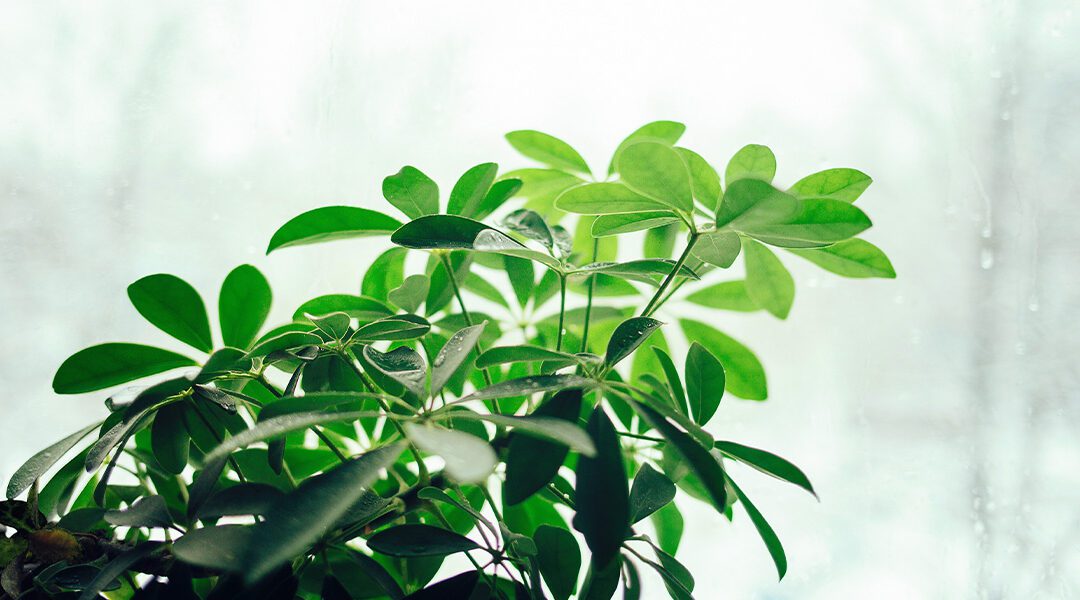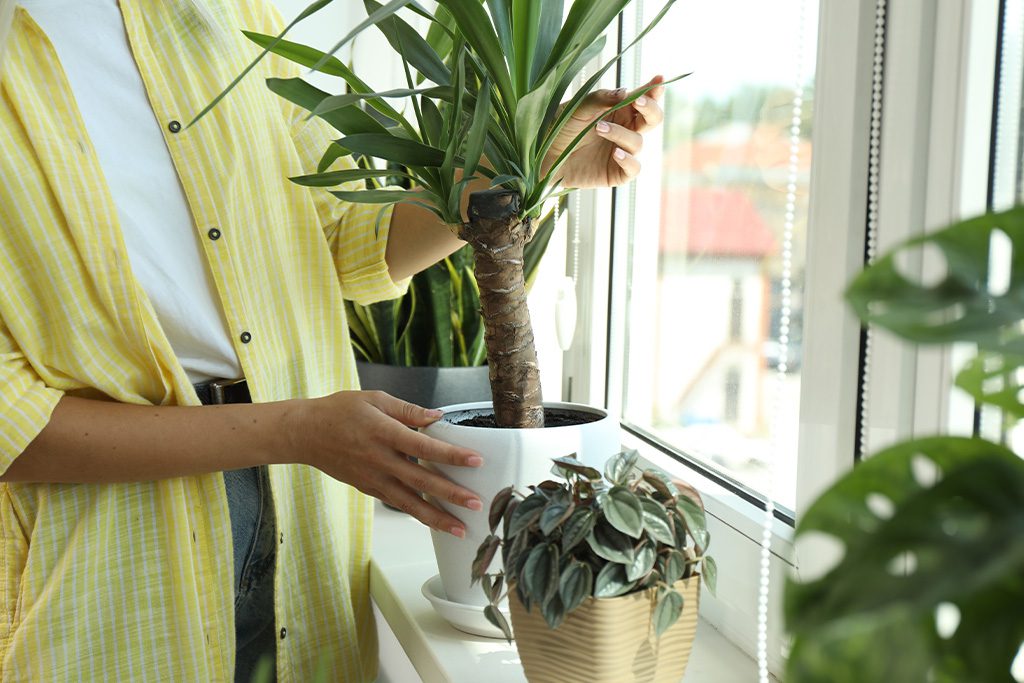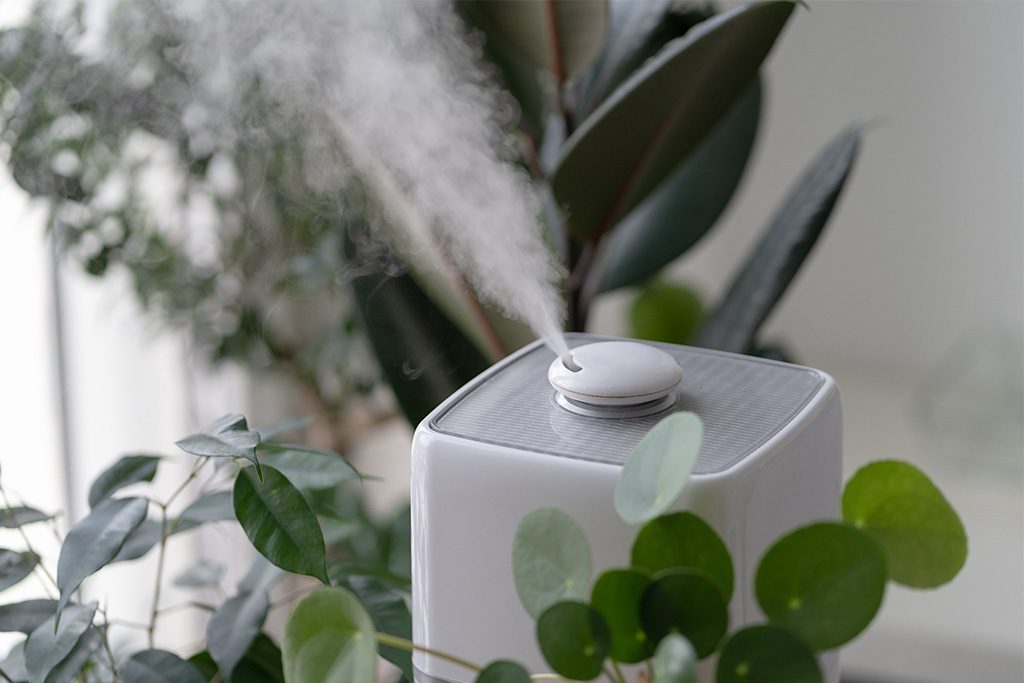Although not as dramatic as the snowy changes outside, the climate in our homes shifts during the winter as well. As houseplants enter dormancy and the humidity and sunlight decline, we have to care for our rooted friends differently. Here’s a guide to keeping your indoor garden thriving during the cold winter!
Reduce Watering as Needed
Many houseplants slow down and take a rest during the winter, sometimes due to declining sunlight, and other times because it’s a natural period of dormancy. As a result, they need less water, so we must change our water routine. The best way is to decrease the frequency of water, not the amount each time. A good soaking less often is always better than frequent small spurts.
Keep in Mind: with the furnace on, the soil surface dries out more quickly, but don’t be fooled by appearances. Stick your finger in the soil 1-2 inches to determine if the soil is dry below the surface. If it’s still moist, wait a couple more days before watering.
Find a Little More Light
Even though they’re inside, houseplants are as connected to the sun as any tree or shrub outdoors. As the winter sunlight wanes, they can struggle to get enough energy. To help, move them closer to the window or a brighter spot with south or western exposure. If that’s not enough, here are some other care tips to give them more light:
- Dust the leaves: without any rain indoors, dust quickly accumulates on houseplants, blocking their access to air and light. Solution? Wipe away the dust to give them more access to the life-giving rays.
- Rotate them: turn them 1/4 each time you water so the sunlight can reach all the leaves; this also prevents houseplants from leaning toward the window.
- Clean the windows: a layer of dust or grime on windows also blocks the amount of sunshine entering the house. Your houseplants will thank you for a clearer view of the outdoors!
- Grow lights: if they’re really struggling for light, you can supplement the sun with indoor grow lights.
Increase the Humidity
With the furnace warming our homes, the humidity can easily take a dive, sometimes down to 20%. Except for cacti, most houseplants prefer a tropical feel of at least 50%. Curled, crispy leaves and brown edges are all signs that they could use more humidity. Here are some common solutions:
- Buy a humidifier to place near the plants.
- Group your plants together: the transpiration from their leaves lends moisture to the other plants around them.
- Set them up on a tray with pebbles and water. The pebbles allow the pots to sit above the water, so they don’t get root rot. Meanwhile, the water in the tray slowly moisturizes the air through evaporation.
Avoid Fertilizing During the Winter
Since most houseplants are not growing much during the winter, you don’t need to fertilize them. It’s better to start fertilizing again in the spring when they wake up from their slumber. New shoots and leaves are signs that they’re starting to grow again.
Keep Them Away from Hot and Cold Fluctuations
A cold blast from an open window or door can startle a houseplant during the winter and even cause them to lose leaves. Likewise, a warm draft from a furnace vent or fireplace can suck up the moisture from their leaves and pot. It’s best to be careful of temperature extremes and keep them away from open doors, cold window panes, and heat sources.
Save the Pruning and Repotting for Later
It’s best to repot them during the growing season so the roots can fill the new pot. Likewise, it’s best to prune them during the spring or summer. During the winter, let them relax and enjoy the slow season.
For more tips on taking care of houseplants in the winter, including any questions on specific plants, visit our garden centers in Carpentersville and Bloomingdale!





